PRESENTATION:Max Hooper Schneider-Carnival of Gestation
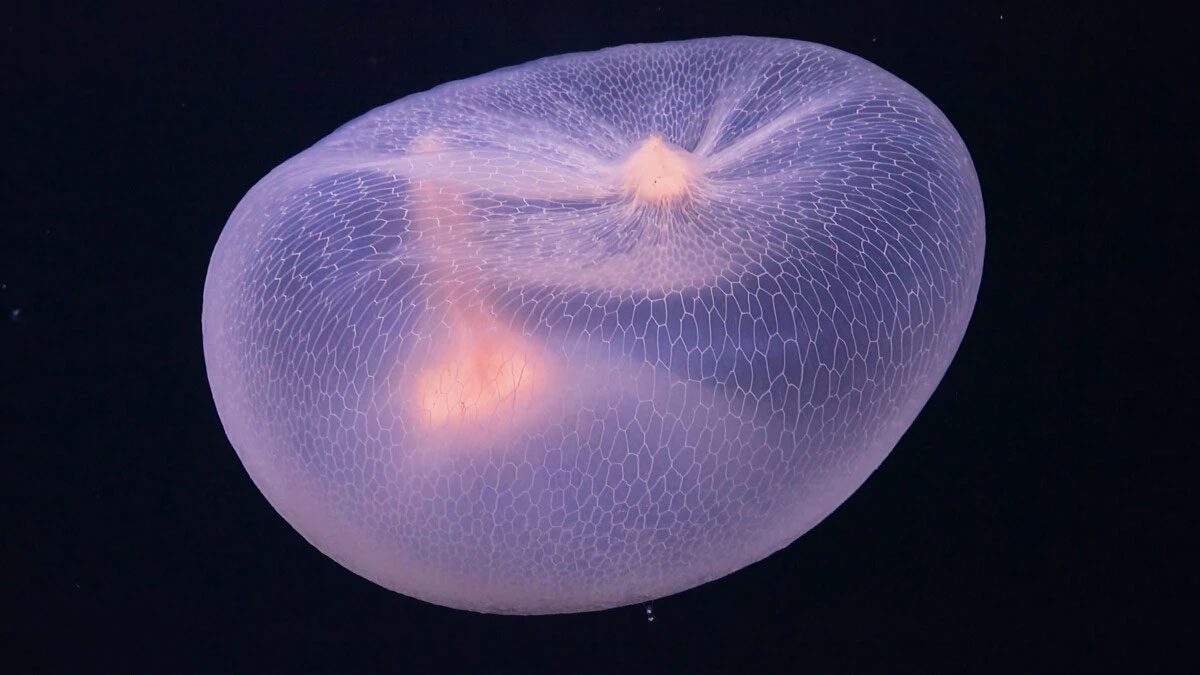 Just as the entirety of the natural world is subject to forces of continuous transformation, Max Hooper Schneider’s artworks reveal states of metamorphosis taking place within macro and micro landscapes. Comprised of natural and artificial objects collectively caught in states of flux, self-contained systems unpredictably expand within the confines of terrariums and vitrines, occupy the hollow spaces of household appliances and discarded industrial machinery, perch upon plinths scattered throughout the exhibition space, or rise from the floor in congealed masses of biomorphic wonder.
Just as the entirety of the natural world is subject to forces of continuous transformation, Max Hooper Schneider’s artworks reveal states of metamorphosis taking place within macro and micro landscapes. Comprised of natural and artificial objects collectively caught in states of flux, self-contained systems unpredictably expand within the confines of terrariums and vitrines, occupy the hollow spaces of household appliances and discarded industrial machinery, perch upon plinths scattered throughout the exhibition space, or rise from the floor in congealed masses of biomorphic wonder.
By Efi Michalarou
Photo: UCCA Archive
Max Hooper Schneider presents “Carnival of Gestation” his first institutional solo exhibition in China, showcasing nearly 30 sculptures, installations, and video works created since 2014 across various media, including six new large-scale pieces commissioned by UCCA. By constructing or simulating unique environments and ecosystems devoid of human presence, Hooper Schneider presents the interconnectedness between seemingly disparate worlds, species, and forms of existence, blurring the boundaries between life and non-life, organic and inorganic matter. This approach challenges anthropocentric perspectives on viewing and creating art. Max Hooper Schneider is influenced by Spinozan materialism, believing that all materials, regardless of form, possess equal agency in their ability to act and be acted upon. His works often depict abandoned, desolate environments or ecological collapse surrounding oceanic and climate crises, prompting viewers to reflect across longer geological timescales beyond the human lifespan. This is also manifested in the exhibition title—while “Gestation” signifies the ongoing growth and vitality inherent in the materials used in the works, “Carnival” represents the multiplicity and openness of the works’ meanings, inviting viewers to interpret and imagine outcomes from their own perspective. Each gallery in this exhibition showcases the artist’s experiments and interpretations of different materials. Organic and inorganic entities such as marine organisms, copper electroplated plants, inert gases, uranium, margarine, and borax continuously interact, forming, transforming, and even self-destructing, creating a dynamic world that contrasts with static exhibits typically found in museums. The exhibition revolves around four core themes: “Thresholds,” “Preservation,” “Autopoeiesis,” and “Traumatic Sublime.” The discussion of “Thresholds” runs throughout the exhibition. The artist believes that there are no clear categories or hierarchies between different materials, and no distinct boundaries between life and death, organic and inorganic, natural and artificial, creation and destruction. For example, in the “Forensic Blossom” series, artificial and natural objects coexist; in the “Dendrite Bonsai” series, vegetal matter undergoes a novel form of growth through copper plating; and in Embedded Divine, inorganic and organic elements of varying ecosystems (what the artist calls “trans-habitat”) are reorganized through surgical and dramaturgical methods. These works challenge conventional classifications of ecosystems through the interplay and fusion of different materials. Regarding “Preservation,” the artist points out that even seemingly stable things change over time. In the “Like Father Like Son” series, borax crystals cover the antique microscopes beloved by the artist’s deceased father. Similarly, in the UCCA-commissioned work Butter Biocoenosis, large blocks of margarine shaped like human organs atop crumbling civilizations are in a state of life support; dependent on the protective layer of their refrigerated vitrines. Despite this protection, subtle changes occur over time and the assemblage of objects will denature. Hooper Schneider’s slightly sardonic approach highlights the fragility of man-made objects on a geological timescale, prompting reflection on our object-centric culture. Following “Preservation,” the exhibition shifts its focus to the concept of “Autopoeiesis,” reflecting the artist’s contemplation on the self-generating and renewing capabilities of life. The “Plasm(o)void” series emphasizes that the artist is no longer the creator of the work but, together with the audience, becomes part of the work’s life cycle—everything is composed of the same molecules (matter) and thus has an equal capacity to act or be acted upon. In the “Dendrite Bonsai” series, bare branches sprout copper dendrites, and as time passes, the weight of the fruits, vegetables, and shrubs diminishes, leaving only voids of dried matter; copper shells resembling remnants of material evolution. Outdoors, the treadmill-like piece Run for Your Life imagines a catastrophic scene: bodiless sweatpants on a burned treadmill, atop seemingly toxic charred, metallic substances, appear as freshly unearthed human relics, gaining new anatomical aspects under the effects of copper plating. Similarly, the outdoor installation Garden of Plushy Entombment resembles an earthen incubator for discarded items, where copper-plated plush toys, driven by natural forces and covered by weeds, integrate into a new, vibrant garden-like ecosystem. “Traumatic Sublime” confronts the shared fate of humanity while evoking a sense of reverence for life itself. In Room 1, Snow of Fortune takes the form of an aquarium depicting an atmospheric anomaly. From a distance, it resembles snowflakes or microplastics underwater, but upon closer inspection, it reveals shredded messages from fortune cookies, suggesting the disruption of old destinies and the emergence of new narratives. In Master’s Temple, capsules that typically dissolve upon ingestion become protective shells for aquatic algae and shrimp, repurposing life-preserving pills from the human world to serve a similar function in the non-human world. The large installation Orphaned Land presents a speculative wasteland where a house swallowed by the desert stands abandoned. Two figures sit on its dilapidated roof, appearing as survivors from a past world or pioneers of a future one. Additionally, the exhibition features Hooper Schneider’s latest video work, The Benthos, Part 1: Creatures of Twilight, based on footage and data collected from an East Pacific Rise exploration on a research vessel named Falkor (too). It delves into the deep-sea regions where light barely penetrates, showcasing the most mysterious and rarely encountered invertebrates. The entire work is free of any computer-generated imagery or AI processing, highlighting the authenticity of these “real aliens”—the invertebrates of phylum Cnidaria—while echoing Hooper Schneider’s creative philosophy of blurring the boundaries between nature and artificiality.
Photo: Max Hooper Schneider, Benthos, Part 1: Creatures of Twilight (still), 2024, Video, 58′3″, Produced in conjunction with Jorge Elbrecht and Schmidt Ocean Institute, Commissioned by UCCA Center for Contemporary Art, Courtesy the artist
Info: Curator: Luan Shixuan, UCCA Center for Contemporary Art; UCCA Dune, Aranya Gold Coast Community, Beidaihe, Hebei, China, Duration: 14/7-13/20/2024, Days & Hours: Daily 9:30-19:30, https://ucca.org.cn/
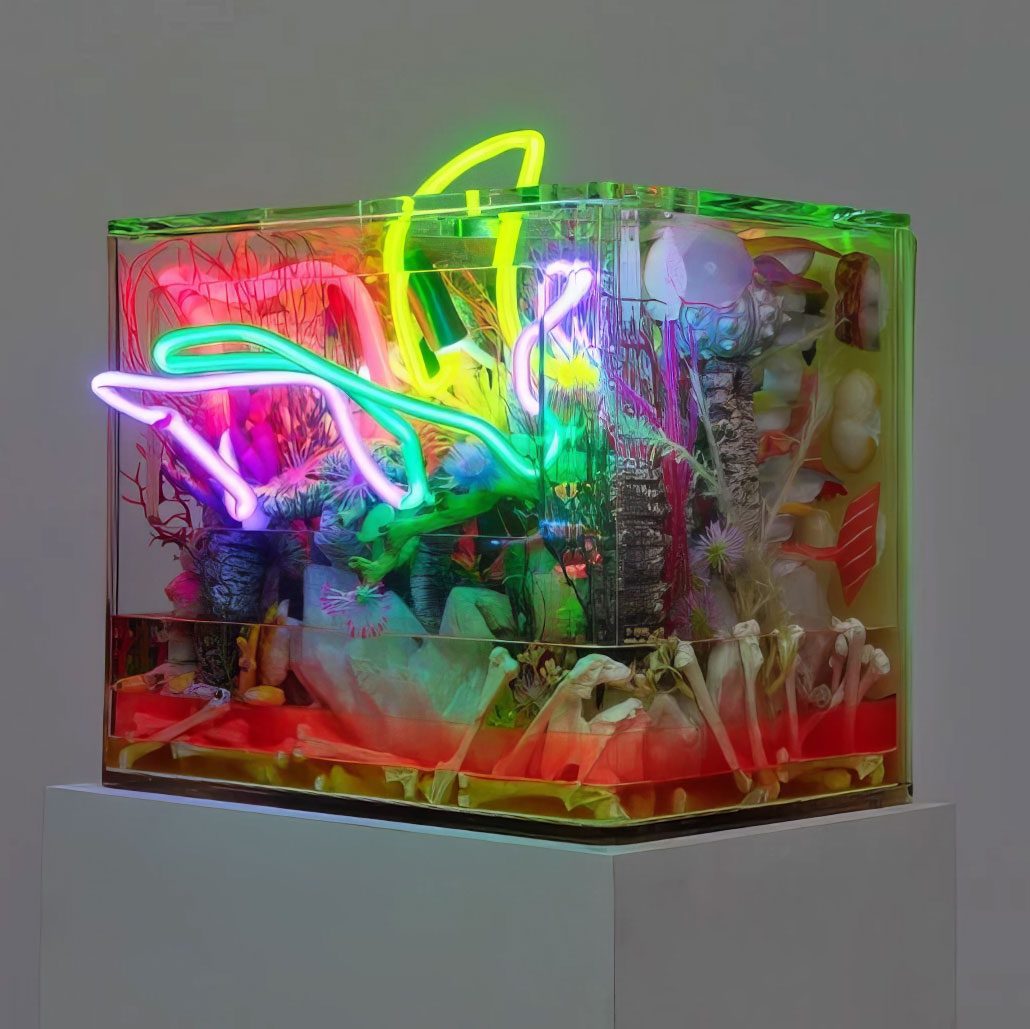




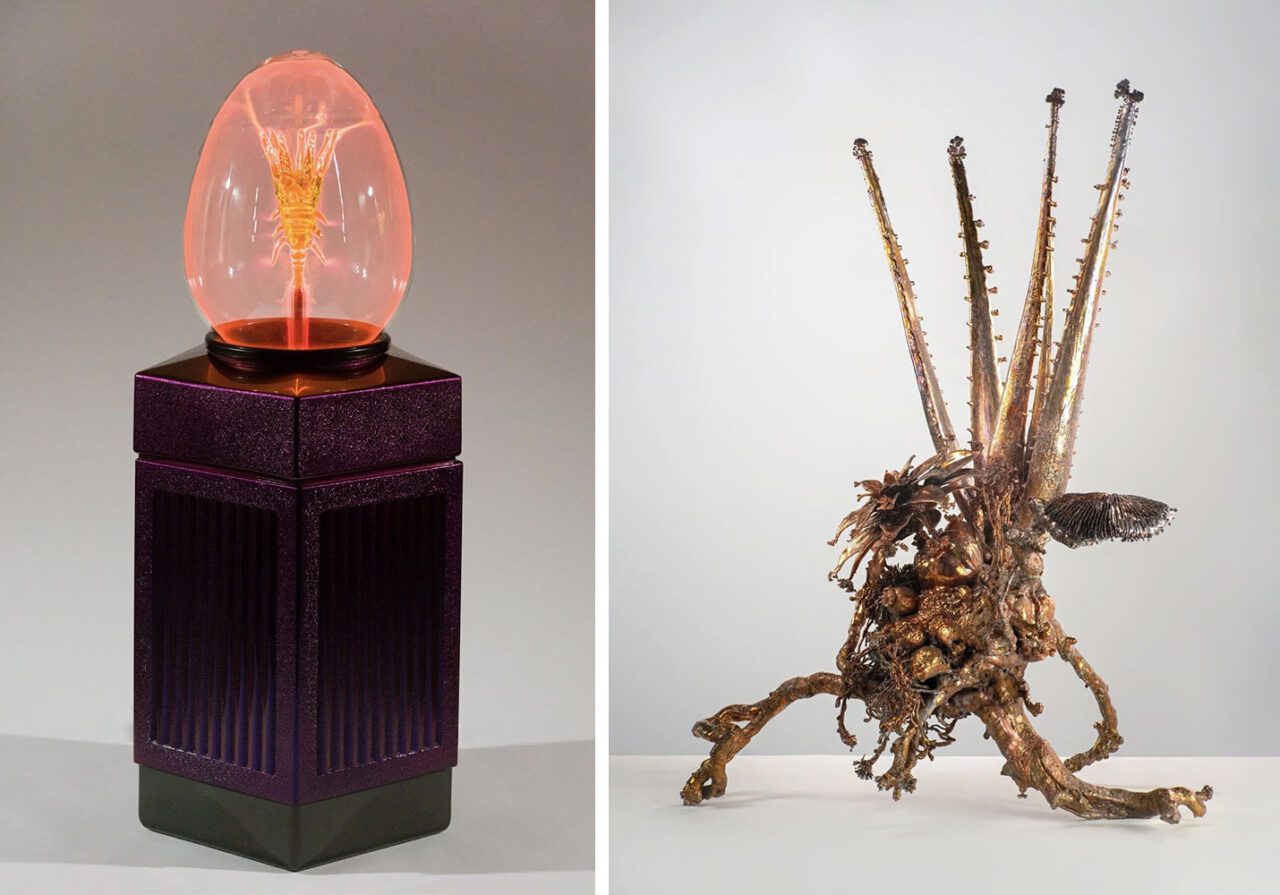
Right: Max Hooper Schneider, Dendrite Bonsai (Aloe Vera), 2024, Copper electroplated fruits, vegetables, and shrub assemblage, 60 × 50 × 100 cm, Courtesy the artist and François Ghebaly
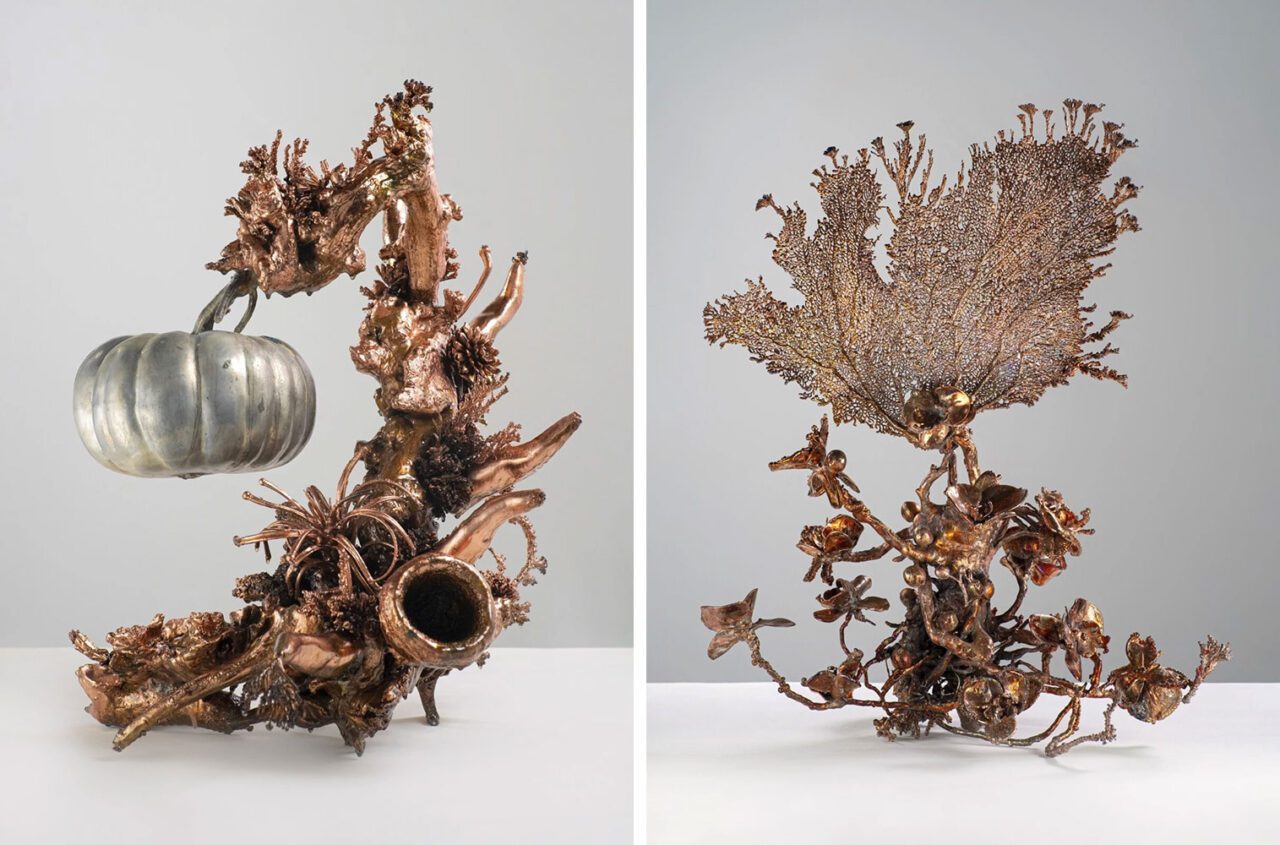
Right: Max Hooper Schneider, Dendrite Bonsai (Coral and Orchid), 2024, Copper electroplated fruits, vegetables, and shrub assemblage, 50 × 55 × 70 cm, Commissioned by UCCA Center for Contemporary Art, Courtesy the artist and François Ghebaly

Right: Max Hooper Schneider, Like Father Like Son 5, 2023, Antique microscope, borax crystals, glass bell jar, 24.8 × 24.8 × 38.1 cm, Photograph by Keith Lubow, Courtesy the artist
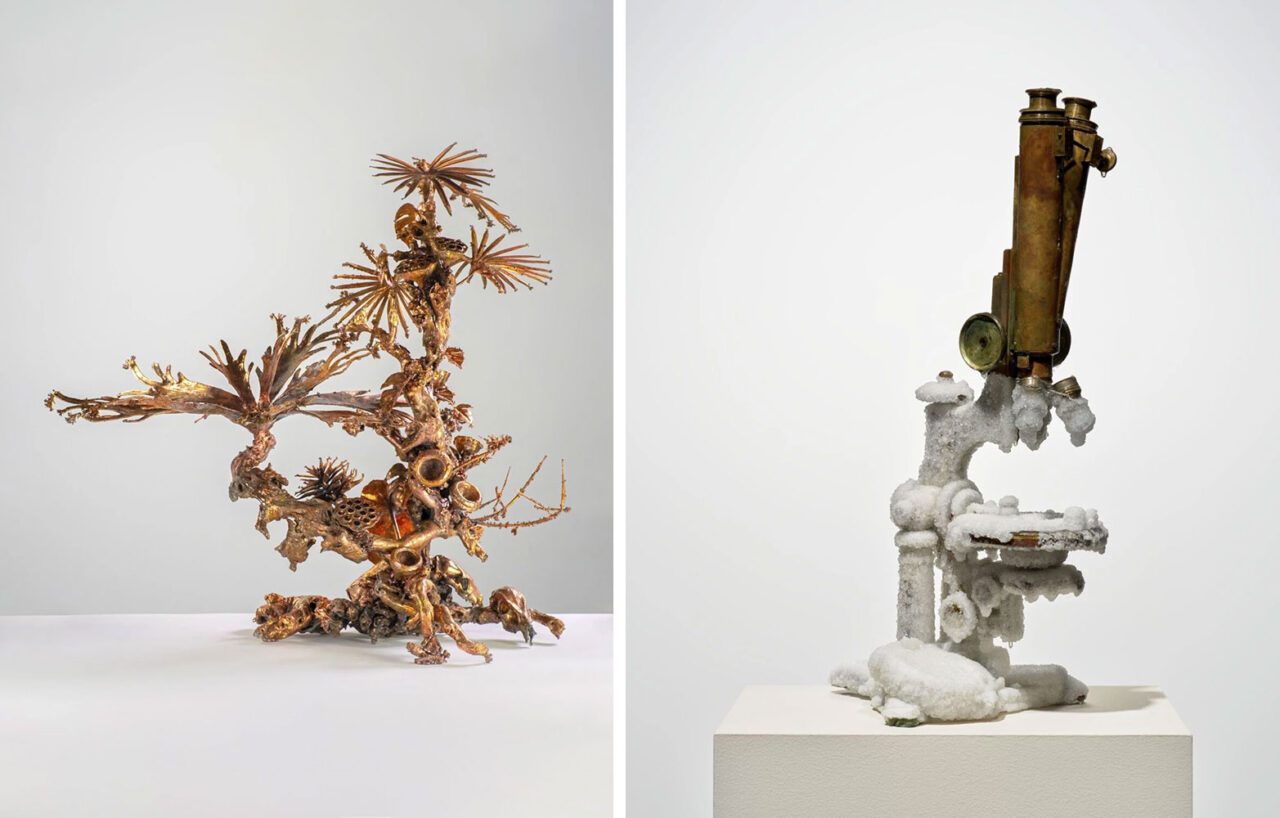
Right: Max Hooper Schneider, Like Father Like Son 7, 2023, Antique microscope, borax crystals, glass bell jar, 33 × 35.6 × 55.9 cm, Photograph by Keith Lubow, Courtesy the artist
